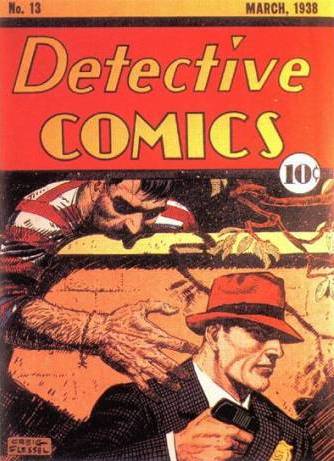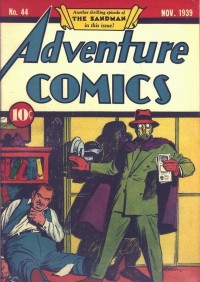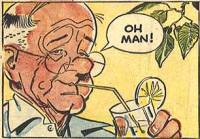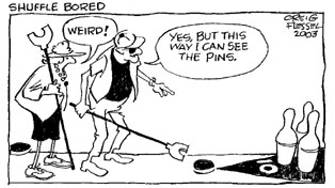
July 21, 2008
 Creig Flessel, 1912-2008
Creig Flessel, 1912-2008

 Creig Flessel
Creig Flessel, a prolific illustrator active as a cartoonist and cover artist at the dawn of the American comic book, has passed away following a recent stroke.
Flessel was born on Long Island, New York in the town of
Huntington at the tail end of a different period in American history than the one where comics would come to prominence exploiting quirks of printing technology and mass distribution networks. Flessel's father was a blacksmith, and Flessel recalled in later interviews that his family didn't add indoor plumbing until he was a teen. Flessel attended the Grand Central Art School in Manhattan, studied with the painter
Harvey Dunn and then went to
Alfred University, graduating alongside future wife Marie Marino in 1936. They would marry a year later. In those early years Flessel drew for the
Street and Smith pulps, became an assistant on the
Dixie Dugan strip, and created art for the Farina Wheat
Vic and Sade advertisements produced by the
John Striebel Studio. Flessel found work with advertising agency Johnstone and Cushing the next year and would draw material for them put to use to sell several major national brands.

Although his first comic book industry work was on
More Fun Comics in May 1936 (he was working there as early as 1935, one source says), Flessel may be best known for a run of comic book covers he did for
Detective Comics in 1937 and 1938, a stretch of books that preceded that comic's most popular tenant Batman. Each issue of
Detective from #2 to #17 offered a Flessel cover featuring a boldly delineated and iconic-looking pulp figure, images that still hold power and look effective today. Flessel wrote and drew a number of features in that early boom period and created the DC character the Shining Knight in 1941. He also developed a close relationship with
Gardner Fox and
Bert Christman's
Sandman, drawing many of that character's adventures including his first cover. He was briefly a member of the
Harry Chesler shop, lasting less than a month.
Flessel followed
Vin Sullivan from DC Comics to
Columbia in 1940, providing work for
Big Shot Comics, and followed Sullivan again to
Magazine Enterprises, even serving as an associate editor. He would continue to draw comics through the 1950s, for
DC,
American Comics Group and
Lev Gleason's
Crime Does Not Pay. His last published work in comics during that period is believed to have appeared in 1959's
Superboy #72; he returned later as an artist on some of the books that
Joe Simon put together for DC such as
Prez. He also was one of several artists that worked with
Al Capp on the hugely popular
Li'l Abner series, producing work that ran in the late 1950s.

Flessel moved into syndicated comic strips of his own on
Ed Dodd,
Win Mortimer and
Hart Spence's feature
David Crane from 1960 until 1971, more than 2500 of which he later donated to
the cartoon holdings at Ohio State University. That strip, a gentle, humorous feature about a small-town minister and his congregation, was syndicated by Hall.
Flessel described a flurry of failed strip efforts, many of which came at the tail end of
David Crane, to
Gary Groth in a 2002 interview. Among those were
Cy Poppins, about the owner of a country store;
Willie Wildwood, an environmentally aware strip;
The Other Foot with Bill Seay; and an astrology strip for NEA to run in its Sunday packages. Flessel briefly taught illustration at the
School of Visual Arts in the 1960s as well.
In more fruitful endeavors, Flessel became a contributor to
Playboy during the '60s. By the time
David Crane ended, the cartoonist had landed a recurring feature in its pages called "The Adventures of Baron Furstinbed." He spoke of going from "piety to pornograpy" with Groth.
I think the worst pornography is the killings and the bashing that goes on in movies. It's really bad. Holy smokes. You get the blood all over you and you hear it and see it. That's pornography. Somebody kissing somebody else or somebody in bed with somebody isn't. I don't think the stuff I did was pornography! I mean, the poor Baron running around the countryside trying to get in bed with the girls and he didn't make it most of the time! He rarely ever made it. He didn't know what a devil of a guy he was!"
Flessel pursued painting, and late in life took to making recreations of some of his earlier, evocative comic book covers and "Furstinbed" cartoons on commission from various fans. He also did a cartoon for the retirement community in which he lived. That community was in California, where Flessel lived during the final act of his long life.
The cartoonist
Michael Jantze was one of those who knew Flessel during the California years. "Creig and his wife Marie moved from the East Coast to Marin County five years back to be closer to his son and family," he wrote to
CR. "I had the pleasure of driving Creig to numerous NCS events over the past few years and having a series of private one-on-one conversations about comics with him. What struck me most was Creig was bridge back to the beginnings of comics in the US. He told me stories about being the new kid in the NCS and sitting next to comic strips greats
Otto Soglow and
Rube Goldberg. He was one of the founding artists in comic books working on some of the seminal titles. He worked in post-war advertising in the '50s, comic strips in the '60s and
Playboy in the '70s. Creig literally worked in every discipline of cartoon art (except for greeting cards and editorial cartoons, but who's counting?)."

Flessel won an
Inkpot from
Comic-Con International in 1991, a Silver T-Square Extraordinary Service award from the National Cartoonists Society in 1992 and
a Sparky Award in 2007 from the
Cartoon Art Museum. Flessel's work was exhibited by CAM in 2008 in a retrospective exhibition. Flessel's genial demeanor and role in the comics industry that existed before the arrival of icons Superman and Batman paved the way for his rediscovery by fans and industry observers in the last decade of his life. "He was a delightful man who acted like you were doing him a favor to ask for an autograph or to pose some question about his long, long career,"
wrote comics historian Mark Evanier of recent encounters with Flessel at
News From Me.
In addition to the CAM retrospective and the lengthy interview with Gary Groth in
The Comics Journal, Flessel appeared with CAM's Andrew Farago at
WonderCon in 2008. A mention in
Michael Chabon's
The Amazing Adventures of Kavalier and Clay (2000) came, at least in first printings, with the artist's name spelled as "Craig," although he reportedly found this a rich source for a humorous anecdote as opposed to an occasion to hold a grudge.
"I was fortunate enough to interview Creig twice this past year," Farago told
CR in describing the experience of working with one of comics' eldest statesmen. "The first time was at the Sparky Awards ceremony in October of '07, when I played straight man to Creig as he riffed on a variety of subjects for an appreciative audience consisting mostly of fellow residents of
The Redwoods, Creig's retirement home."
"Not wanting to mess with a winning formula, we reprised our roles at a WonderCon panel this past February. Knowing full well that you taking nothing for granted at age 96, Creig greeted me by shaking my hand and saying, 'I bet you thought you'd seen the last of me!' Any doubts that I'd have difficulty passing another hour's worth of conversation with him disappeared immediately.
"We'd made plans to take our act on stage again in 2012, when Creig's 100th birthday rolled around. I thought for sure he'd make it, and everyone in the audience that day probably figured Creig had another 20 years left in him, easily."
Creig Flessel, artist of the comic book Golden Age, had a family that included his wife, a son and a daughter, and grandchildren.
*****
click through the names that follow to read the full remembrances from Andrew Farago and Michael Jantze.
*****
*****
posted 8:25 am PST |
Permalink
Daily Blog Archives
November 2019
October 2019
September 2019
August 2019
July 2019
Full Archives


